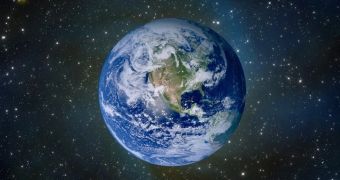A paper published in the journal Science this June 13 tells the tale of how, while analyzing the makeup of our planet, scientists found evidence that what might be Earth's largest water reservoirs is hidden under the United States.
As familiar as people are with bodies of water that sit at the surface of our planet, there are few who know that the Earth also packs some reservoirs on the interior, and that plate tectonics makes it possible for water to cycle between them.
What's more, researchers themselves are yet to make head and tail of how water moves from the Earth's surface all the way to interior reservoirs with the help of the natural movement of tectonic plates, EurekAlert informs.
Now that there is evidence that a massive water reservoir is resting under the continental United States, it is expected that scientists will be able to use this information to gain a better understanding of our planet's water cycle.
“Geological processes on the Earth's surface, such as earthquakes or erupting volcanoes, are an expression of what is going on inside the Earth, out of our sight,” explains Steve Jacobsen with Northwestern University in the United States.
“I think we are finally seeing evidence for a whole-Earth water cycle, which may help explain the vast amount of liquid water on the surface of our habitable planet. Scientists have been looking for this missing deep water for decades,” he adds.
The trouble with the water reservoir believed to sit at depths between 250 miles and 410 miles (402 kilometers and 660 kilometers) beneath the United States is that it is not an underground ocean per se, Steve Jacobsen and colleagues explain.
On the contrary, what lies under the United States is all the right ingredients for water, but which are trapped in the molecular structure of the minerals in the mantle rock. The mineral believed to hold these ingredients is known as ringwoodite.
If these findings are true not just on a regional scale but also for the rest of the globe, it is possible that this transition zone within our planet's mantle, i.e. the layer that sits between depths of 250 miles and 410 miles (402 km and 660 km), holds much more water than all surface oceans combined.
As the researchers put it, “If just one percent of the weight of mantle rock located in the transition zone is H2O, that would be equivalent to nearly three times the amount of water in our oceans.”
In order to find evidence that oceans worth of water are lurking under the United States, possibly under other regions, scientists used seismic waves to examine the structure of the deep crust and mantle, and also looked at ringwoodite samples.

 14 DAY TRIAL //
14 DAY TRIAL //